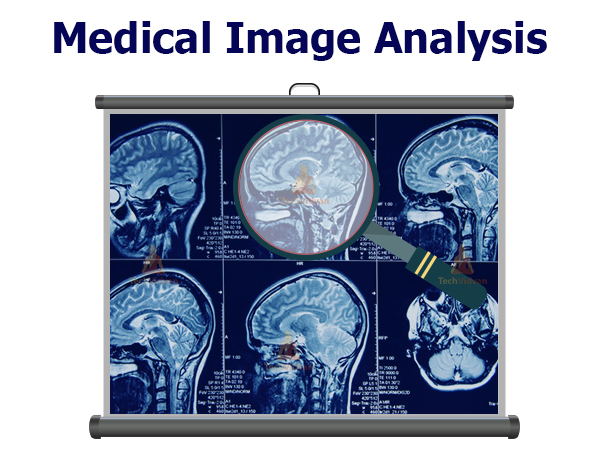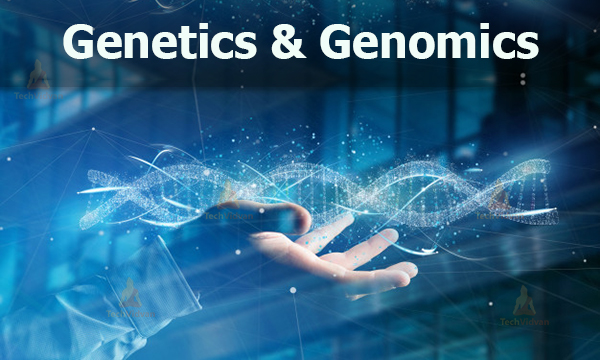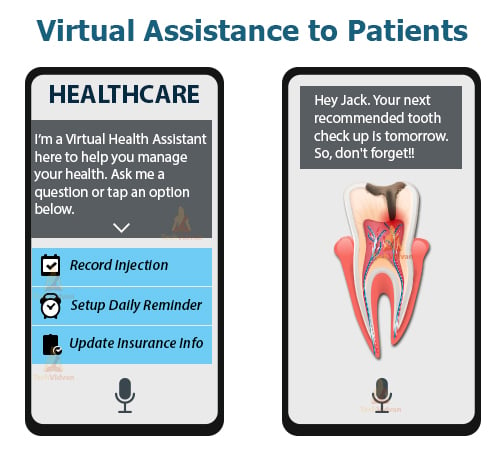Data Science in Healthcare – 6 Must Read Use Cases
Data science has now become an integral part of almost every industry.
Healthcare is one of those industries that has improved the medical services to a whole new different level. You must be thinking how? By implementing Data Science in healthcare industry.
Today, doctors are using various advanced medical equipment that generates a large amount of health data. In the United States, around 1.2 billion clinical documents are generated annually. Out of which nearly 80% of the data is unstructured and is in the form of notes written by the doctors, images and some other files.
Thus, handling such a large amount of data is becoming a tiring task for doctors and scientists. This is where Data Science provides a sea of opportunities for the healthcare industries to collect, organize, and analyze these data in the most efficient ways possible.
In this article, we will understand how different fields of the healthcare industry are using various concepts of Data Science.
Data Science in Healthcare
The main aim of thousands of Data Scientists applying Data Science in healthcare is, to obtain a deeper understanding of each and every detail of the human body. It will help them in providing better treatment to patients all around the world.
Let us see the different use cases of Data Science in the healthcare industry.
Data Science Use Cases in Healthcare
1. Data Science for Medical Image Analysis
Medical imaging has been highly benefited by the application of Data Science in healthcare. It is one of those fields in healthcare that helps to figure out better treatment strategies.
IBM estimates that the medical images contain around 90% of the overall medical data. Doctors use the medical imaging technique to effectively visualize the interior parts of the body.
Also, to analyze the function of some of the organs to diagnose and treat any disorder or disease. The insights gained from these images can make a difference in the patient’s treatment.
Various imaging techniques are magnetic resonance imaging (MRI), X-ray, Computed tomography, Mammography, CT-scan, etc.
A number of methods are used to handle the discrepancies in the resolution, modality, and dimensions of these medical images. These methods help to improve the quality of these images. As well as, to extract meaningful insights from the images more efficiently and make accurate interpretations.
The entire medical analysis process makes use of several algorithms that are:
- Some image processing algorithms that take the input image to enhance, segment and denoise these images.
- Descriptive image recognition algorithms are then used to extract the insights from these images and interpret the results to suggest better treatment solutions.
Several supervised and unsupervised Machine Learning algorithms can be used for this purpose. Using some Deep Learning based algorithms provides the result with more accuracy.
Some of the advanced applications are cancer detection, tumor detection, etc. One of the most popular analytical frameworks, Hadoop contributes to image analysis in several tasks by using Machine Learning algorithms like SVM, Wavelet analysis, etc.
2. Genetics and Genomics
The area of the medical field that concerns the sequence of the genome of any organism and its analysis is known as Genomics.
Did you know? The Genomic experts are responsible for identifying the DNA sequences and then analyze the genetic mapping to understand the disease. The main reason for applying Data Science to genomic and genetics is to provide personalized treatment to the patients.
Thus, the aim is to analyze the impact of the DNA on the patient’s health and predict how the prescribed medicines are going to affect him.
All the genetic data is integrated with other medical data to find the relation between genetics, disease and the patient’s response to the medicine. These insights help the doctors to find the best fit treatment for an individual patient.
The technologies employed for this purpose are:
A. Map Reduce
It provides the mapping of the genetic sequences that reduce the time required for data processing.
MapReduce is actually a series of Java applications that pull out the requested data from the Hadoop clusters. Implementing Hadoop as a part of a knowledge warehouse allows organizations to handle and process data which will are previously impossible to research .
B. SQL
It helps in fetching the genomic data, BAM file manipulation, and the computations involved in the process. Professionals like doctors, nurses and other healthcare staff members are going to be required to understand the way to retrieve information from a database.
Structured command language is employed to extract information from a electronic database to deal with an array of business information needs. A lot of research is still going on in this field and there are still areas that are not explored yet.
3. Drug Discovery
The discovery of drugs is a complex process and involves a cost of around $2.6 billion. It takes a time duration of around 12 years to take a drug from the laboratory to the market.
The industries are using Data Science to simplify and shorten the number of processes and the testing involved in the Drug Discovery. Thus, researchers are using various Machine Learning algorithms and mathematical models. To predict how these drugs will affect the human body for discovering more effective drugs.
The different algorithms and models have reduced the Lab work involved in the process of drug discovery. It has given more power to computational drug discovery.
The purpose of computational drug discovery is to develop computer models equivalent to biological networks. This will help to predict the future outcomes of the drugs more accurately and easily. It helps in choosing the experiments that should be performed and predicting the possible side effects.
Data Science enables researchers to analyze the result of various chemical combinations. So that they can extract meaningful insights such as the type of cell, genetic mutations, and other minor details.
Various unsupervised Machine Learning algorithms help to perform these various activities and discover better drugs for the people.
4. Providing Virtual Assistance for Patients and Customer Support
The healthcare industries are trying to improve the clinical processes to such extent that it removes the necessity for the patients to meet the Doctor in person for some general cases.
Developing a mobile app to bring the Doctor to the patient can work in some cases. Another alternative available is the AI-powered Chatbots. You can simply describe your symptoms and ask doubts or questions that you have in your mind.
The chatbot will answer you about your medical status by linking the various symptoms that you provided. Such apps can remind you of taking medicines on time, fixing an appointment with the doctor for a regular health check-up, etc. These approaches encourage people to adopt a healthy lifestyle.
These applications make use of Machine Learning algorithms that use natural language processing( NLP) to analyze the customer’s data and provide a personalized experience.
Some of the similar popular apps are YourHD, Babylon Health, etc. These algorithms help to automate some general cases and enable the doctors to focus completely on more important and critical cases.
5. Data Management and Data Governance
In the era of Big Data where an enormous amount of data is being generated with each passing second, managing all this data in hand-written registers is not possible.
Data Science helps to convert all this paperwork into a more promising digital form by using several Machine Learning algorithms. It also makes sure that all the data is readily available to the people involved in healthcare at any point of time. These algorithms ease the task of healthcare industries.
As the entire medical data (both past and present) of a patient is stored at a single place, having all the data available at once will help the doctors to make better decisions. Some additional research can fill the voids in the patient’s data in the database. And, some cloud-based solutions are used for providing faster test results and the best possible treatment.
The different Machine Learning algorithms help to extract meaningful insights from the currently available data of the patient. Then compare it with the data stored in the database to identify the best possible treatment for the patient. These algorithms also take care of the security of the data.
6. Predictive Analysis and Disease Prevention
One of the most significant advantages of Data Science in healthcare is to enable doctors to predict the events. That can take place during the entire treatment process in advance.
There are many critical diseases that can be cured if identified at the right time. Thus, predicting the diseases or the risks involved in the treatment will help in figuring out better prevention plans.
The predictive models are built with the help of data such as the patient’s medical history, current status, doctor’s notes, genetic research details, etc.
These models find the correlations, the interconnection of symptoms, search for similar cases, analyze the impact of biological factors, that is, genome structure, etc.
Using all the information, the predictive analysis algorithms run the models for the prediction of disease and its evolution, risks involved, and effect of the treatment on the patient. Such predictive algorithms can help to save the life of a person by catching the disease at the right time. It helps the doctors to take various decisions involved in the treatment more precisely.
Data Science in Healthcare Case Study
How Cognizant used Data Science to provide better healthcare services to patients:
Cognizant is a leading American corporation providing IT services to fulfill the increasing needs of today’s digital era. They conducted a survey named Consumer Assessment of Healthcare Providers and Systems (CAHPS) to know the views of all the patients.
The corporation wanted to know the services provided by each and every hospital in the United States.
Want to know why? The reason for conducting this survey was to understand the expectations of the customers and provide customized healthcare services.
In 2017, The widespread health network in the US asked them to analyze the data collected from the survey by applying various advanced computer science technologies. They employed different Machine Learning algorithms like decision trees, regression, etc. to gain some meaningful insights from the data.
The Cognizant team performed a detailed analysis of the data of around 60,000 patients who visited the different healthcare centers over a period of six months.
After analyzing this data, the team recognized some important issues reported by the patients. Such as inefficient communication, lack of immediate responses, pain management, etc.
Using this information Cognizant presented these different problems to the various healthcare industries in the US indicating them where they are lacking and where they need to improve.
They used these insights to suggest some specific actions that the industries need to take to provide more personalized services to their patients.
Summary
Data Science solutions are changing the dynamics of the healthcare industries in several different ways.
In this article, we saw how Data Science in healthcare is helping the healthcare industry to improve services and fulfill the increasing requirements of the customers. There are still endless possibilities in which the Data Science and healthcare industries can work hand in hand.




